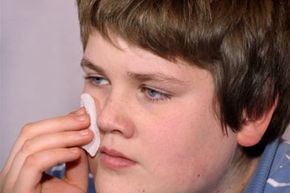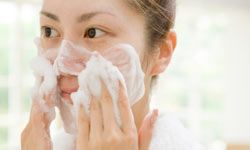Almost every adult has an acne horror story. On the morning of your very important job interview or perhaps the long-awaited day of your wedding, you look in the mirror, and there it is: a pimple, front and center on your face. As you lean in closer to the mirror, you spot a few more of them. Those unattractive spots have made an appearance just in time to ruin your day -- and your self-esteem.
You're not alone. Along with wrinkles, acne is one of the most common facial skin issues that people deal with, and it causes major emotional distress to many [source: National Institute of Arthritis and Musculoskeletal and Skin Diseases]. Although the condition most commonly affects teenagers, it's also a problem for some adults even into their 40s [source: American Academy of Dermatology].
Advertisement
Acne can be caused by many things ranging from bacterial infections to an overproduction of the natural fatty oil called sebum, but sometimes it's what you put on your face that is the culprit. Cosmetics and soaps can aggravate the skin and cause problematic breakouts. And sometimes it's even the soap that is supposed to help purify your skin that causes the breakouts.
Fortunately, there are skin care products, including cleansers, available to help you prevent acne breakouts. Many of them are called non-comedogenic cleansers, meaning they contain ingredients that should not clog your pores or cause more skin problems.
Read on find out what exactly non-comedogenic cleansers are and how your pores get clogged to begin with.
Advertisement

